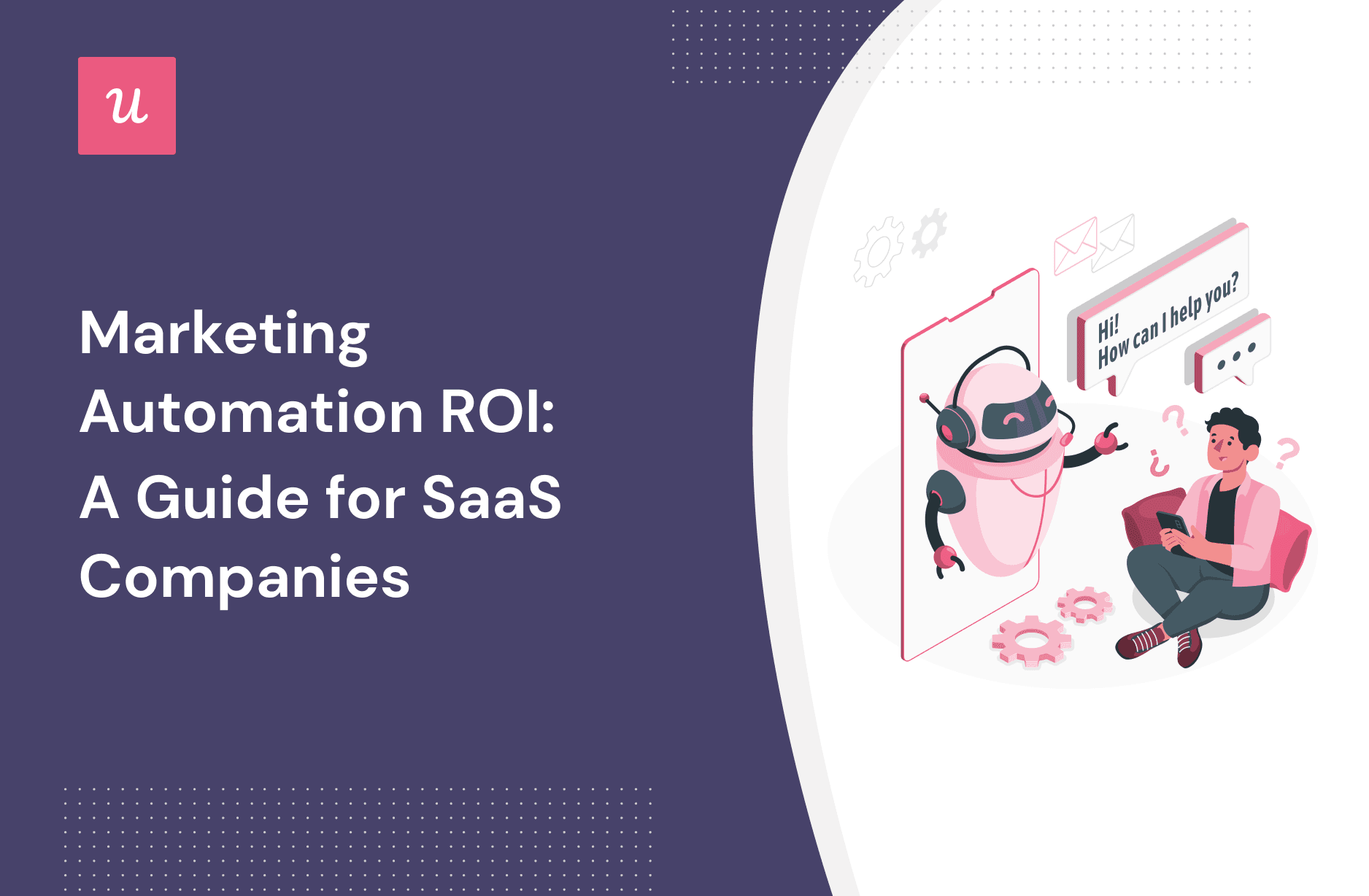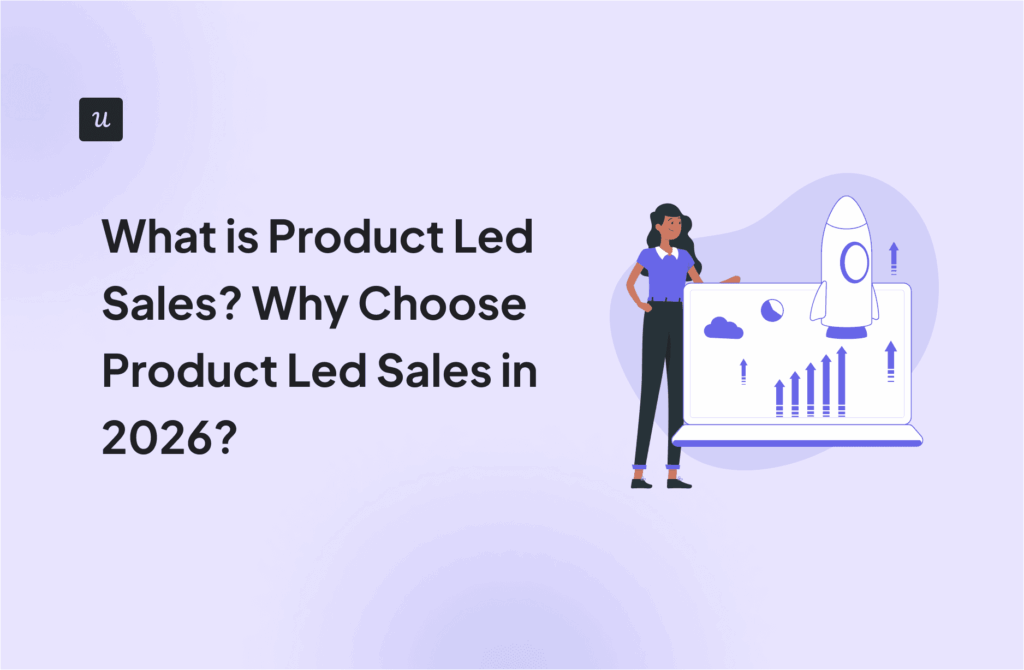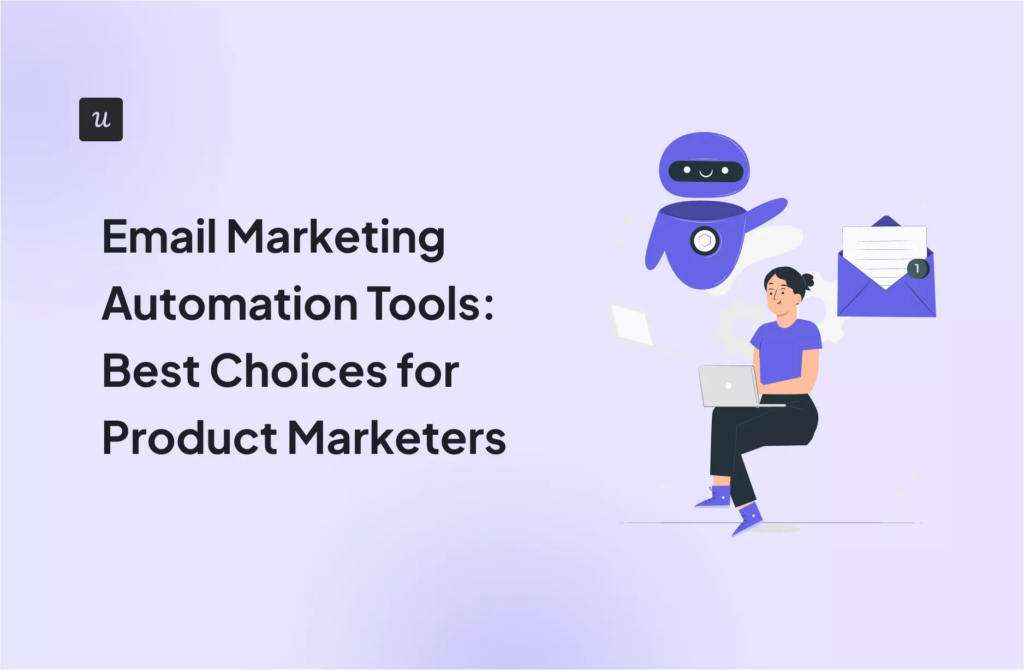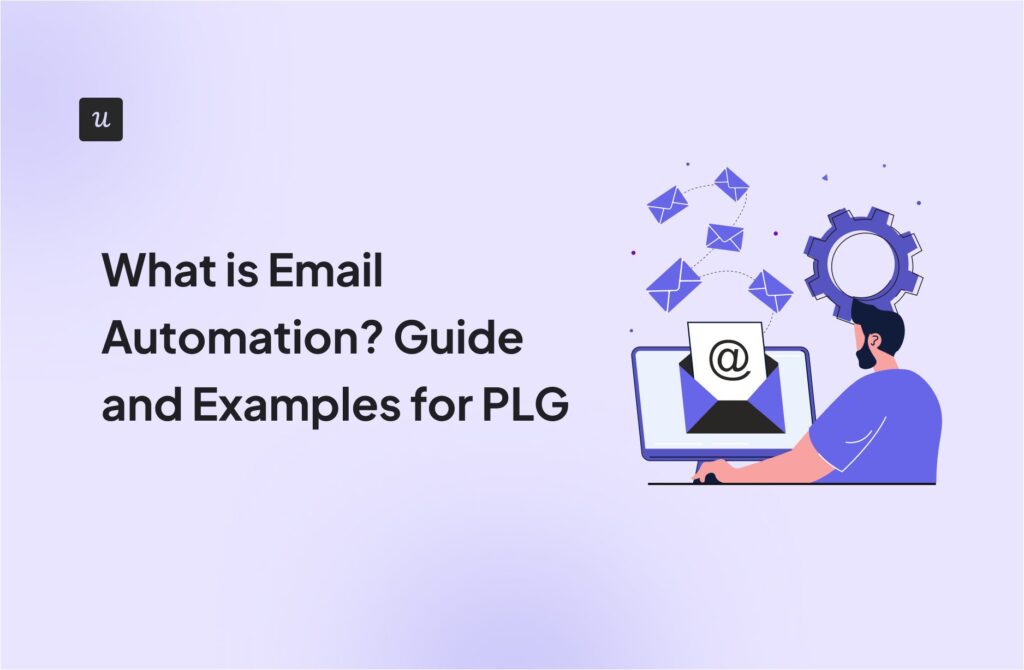
How do you calculate marketing automation ROI? More importantly, how can marketing teams maximize it?
If you’re after the answers to these questions, you’re in the right place!
On top of that, our article:
- Defines what marketing automation is.
- Explains why it’s worth investing in.
- Identifies the areas of marketing that you can automate.
- Introduces tools that you can use to automate your marketing processes.
Let’s get right to it!
Try Userpilot Now
See Why 1,000+ Teams Choose Userpilot

What is marketing automation?
Marketing automation refers to the use of technology and software to automate repetitive routine tasks and processes that marketers would otherwise have to complete manually.
Examples of marketing automation include sending automated emails triggered by user behavior, or scheduling and posting content across all social media platforms.
Why implement marketing automation in your SaaS?
For starters, marketing automation enables marketing teams to streamline their processes by reducing human mistakes and eliminating inefficiencies.
For example, it would be incredibly easy for a marketer to forget to send a confirmation email every time a user makes a change to their account, especially if thousands of such changes happen daily.
And think about the time that would be wasted without automating such tasks.
What’s more, marketing automation enables businesses to deliver targeted and personalized experiences for different user segments or personas. Instead of spamming users with irrelevant information, they receive messages that help them achieve their unique goals at different stages of the user journey.
Because they help users solve their genuine problems better, automated marketing experiences improve conversion rates. This means more paying customers and upsells or cross-sells, which translates into better business performance.
How effective is marketing automation?
Very effective compared to other marketing techniques.
In fact, marketing automation (along with content marketing) is said to be the most effective digital marketing technique according to Statista. And 48% of marketers believe that sales and market automation strengthen relationships with customers.
Considering these figures, it’s no wonder that 87% of companies are using or plan to use marketing automation solutions.
What are the costs of marketing automation technology?
The costs of successful marketing automation implementation depend on factors such as the size of the business, the size of your user base, or the number of contacts/leads.
This involves:
- Automation tool subscription fees – you’re likely to need a number of tools to automate your marketing operations. The starter plans aren’t usually enough for mid-size or enterprise-level businesses as they don’t provide the necessary features or have low usage limits.
- Data migration – if you’re already using some tools, cleansing, transforming, and mapping the customer data will add to the costs, especially if you have a large customer base. The same applies to existing templates and all the resources you’ve previously developed.
- Training costs – learning how to take full advantage of the automation tool takes time and may require direct instruction.
How to calculate marketing automation ROI?
Marketing automation ROI shows how profitable or cost-effective marketing automation solutions are. Businesses use it to determine if their benefits outweigh the costs they’ve incurred.
To calculate the marketing automation ROI, divide the total net returns from the investment by the total costs.
Obviously, how accurate the measurement is depends on how accurately you calculate the costs or returns while increased revenue or cost savings are fairly easy to quantify, efficiency improvements – not necessarily so.
What is the average ROI for marketing automation?
According to Nucleus Research, companies realize an average return of $5.44 for every $1 invested over the first 3 years of implementation. So that’s 544%. What’s more, most companies recover the cost of investment in under 6 months. Pretty impressive!
Which tasks the marketing team can automate?
How does automation actually work? Here’s how you can automate some of the marketing jobs that used to be done manually.
Lead generation and scoring
Lead scoring and qualification is one marketing area you can easily automate.
For example, you can use marketing automation tools to score your leads based on their interactions with the product. In this way, you can identify your power users or those customers that are ready to upgrade.
How do you do it?
First, you identify the relevant actions inside the product and assign score values to each of them. This could be using specific features or completing a custom event.
As users engage with the product, your analytics or adoption platform like Userpilot tracks it and passes the data on to your CRM which uses it to automatically calculate the overall lead scores.

In-app onboarding
With the tools currently available, it’s possible to automate user onboarding inside the product.
As users first sign into the product, you can automatically trigger a welcome survey. This enables you to collect the information you need to personalize the onboarding experience for your users.
Specific user responses can then trigger bespoke onboarding flows for different user segments or personas. For example, if you have a graphic design app, the interactive walkthrough for a professional graphic designer will most likely be more complex than the checklist designed to onboard a hobbyist.
Based on how users progress through the onboarding process, you can reinforce some of the messages by triggering contextual guidance.

Email marketing campaigns
Email marketing tools allow teams to completely automate their campaigns.
The initial work goes into creating the rules and developing the content. Once that’s done, all of the work is done automatically without any human involvement – no missed follow-ups or leads.
What are the use cases of automated email marketing?
You could use them to provide additional guidance during the onboarding process, reengage inactive users or nurture potential leads, just like in the example below.

In-app messages
In-app messages are an essential task in every SaaS marketer’s work. They’re great for helping users discover relevant features, announcing product updates, or driving upsells. You can also use them to engage users that might be at risk of churning.
You could trigger them at a specific time and place or contextually, based on user in-app behavior.
For example, if a user completes actions that normally indicate they might churn, you could target them with a message and provide them additional guidance or prompt them to engage with features that are of value to them.

Customer feedback surveys
Another thing that you can trigger contextually based on user behavior is in-app surveys.
For example, you could trigger a survey as soon as the user engages with a new feature that you’re testing. In this way, you increase the chance they respond and their feedback is likely to be of more value as the experience is still fresh in the minds.
You could also schedule surveys to launch automatically at specific intervals, for example, every 3-4 months, to keep track of the PMF, NPS, or CSAT scores.

Self-service product guidance
Instead of relying on agents to provide customer support and guidance, it’s easy to automate it by offering users self-service on-demand support.
This could be in the form of a resource center or knowledge base where they can find written and video resources they need or an AI-powered chatbot widget that will help users deal with their most common issues and requests.
This will likely reduce the number of support tickets and free up much of your team’s time.

Testing product messaging
How do you make sure you choose the best in-app message or website copy for your product?
For example, by A/B testing.
All you have to do is enable two different versions of the content and trigger one version to half of the users and the other version to the other half. Then track the conversions and engagement. Easy.
Now imagine doing this manually. Is this even possible?

Best marketing automation platforms that boost ROI
These days most tools allow a certain level of automation. However, not all of them are going to deliver the benefits that you’re after to the same extent.
When building your marketing tool stack, it’s also important to look at the tool integrations. To maximize your ROI, make sure all your tools talk to each other seamlessly.
Userpilot – marketing automation software for onboarding and adoption
Userpilot is a product adoption platform that allows you to automate in-app onboarding.
Which features does Userpilot offer?
- Engagement layer – to drive product adoption with targeted contextual messages:
– In-app messages – tooltips, modals, slideouts, banners, driven actions, and hotspots
– Interactive walkthroughs
– Onboarding checklists
– Resource center for self-service support
– WYSIWYG editor with an AI writing assistant
– Automatic content localization - In-app surveys – to collect user feedback:
– Template library
– Dedicated NPS dashboard and qualitative NPS response tagging - Product analytics – so that you can use product usage and user behavior data to inform your processes:
– Customer segmentation for personalized experiences
– Event analytics – including custom events
– Feature tagging – clicks, hovers, text infills
– Checklist, survey, and resource center engagement tracking

HubSpot – marketing automation platform for email marketing
HubSpot is one of the most popular CRM and marketing platforms. It helps teams to automate and streamline their email marketing campaigns.
It enables teams to score their leads, segment users for personalized communication, and visualize user data in custom dashboards.
HubSpot even offers a 2-way integration with Userpilot which means you can:
- Score and qualify leads and segment users based on in-app behavior tracked in Userpilot
- Create targeted email campaigns based on user activity
- Collect customer feedback and trigger in-app experiences based on the data from HubSpot’s CRM

OptinMonster – marketing automation platform for lead generation and qualification
OptinMonster is a powerful lead generation and conversion optimization tool. Marketers can use it to capture leads, grow subscriber lists, and increase conversions on their websites.
OptinMonster is best known for its Exit-Intent technology which tracks visitor behavior and detects when they’re about to leave the website. At this point, it can trigger a targeted pop-up to re-engage the visitor by offering an incentive or capturing their email address that you can later use in marketing campaigns.

Conclusion
The average marketing automation ROI exceeds 500%.
That’s because marketing automation enables teams to deliver personalized marketing campaigns that improve product adoption, drive sales, and foster stronger relationships with customers. It also minimizes errors and frees up marketers’ time.
If you want to see how Userpilot can help you automate your in-app marketing efforts, book the demo!






